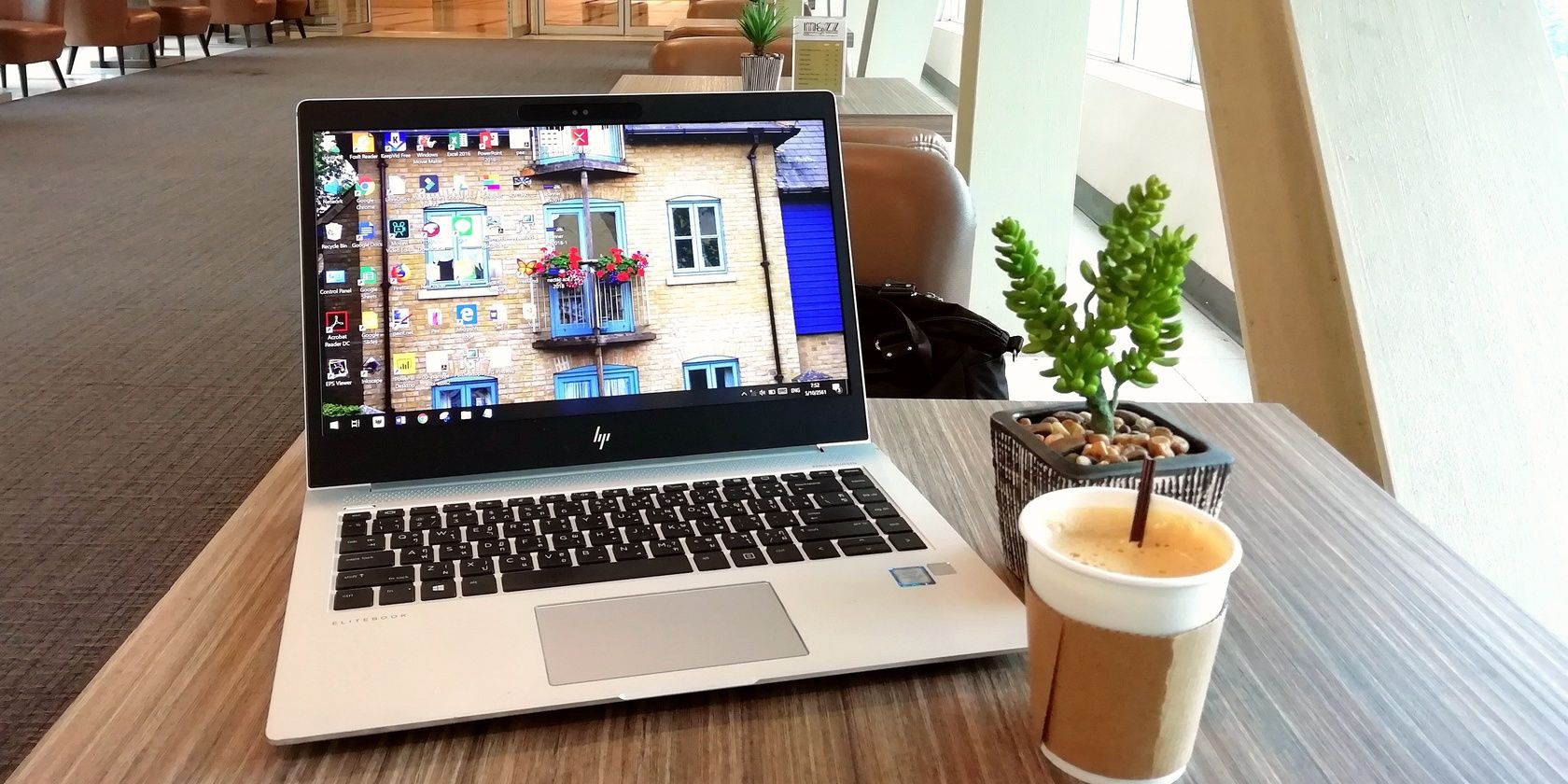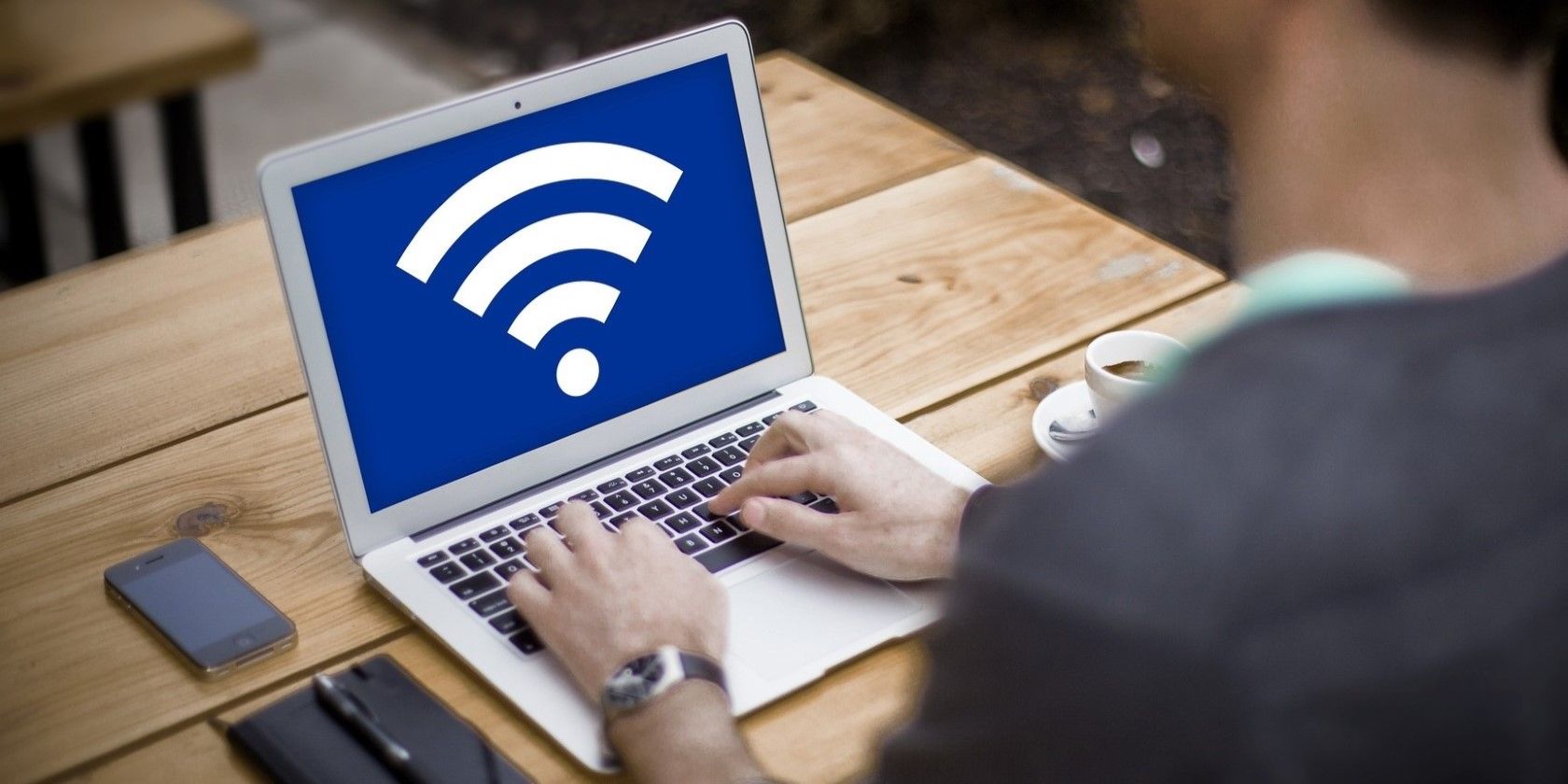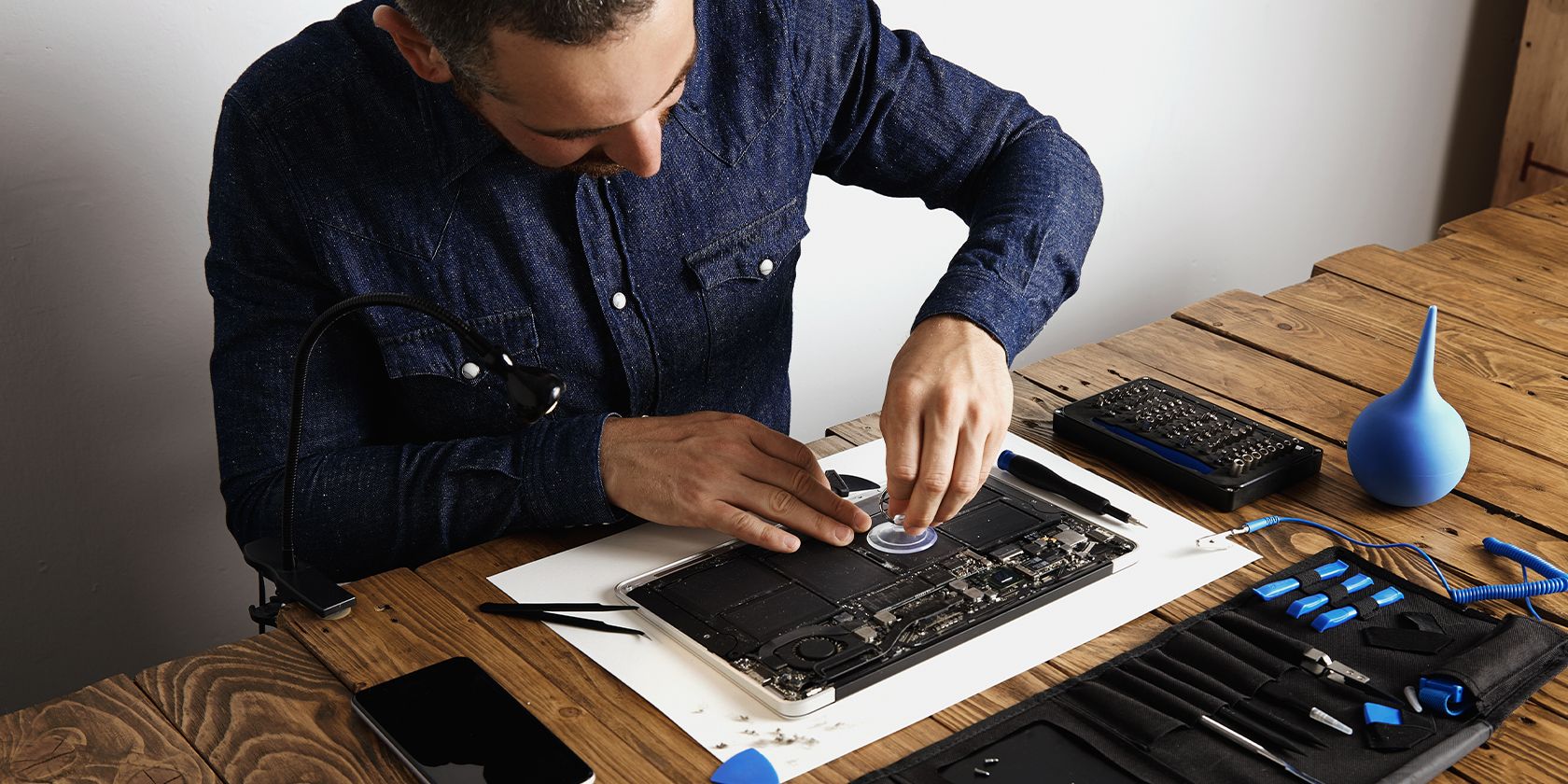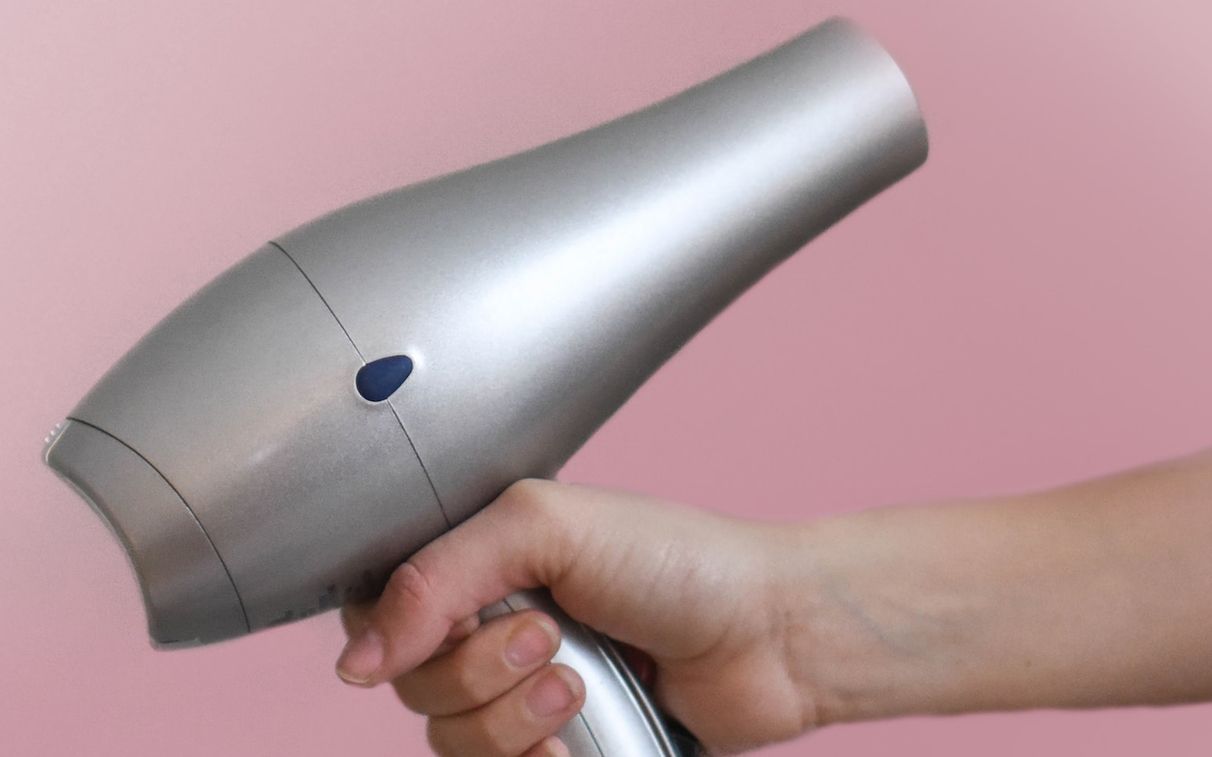Electronics and water don't mix well, and laptops are no exception. Water damage can wreak havoc on your beloved device, whether it's an accidental spill, a bathtub drop, or rain exposure.
Usually, water damage on a laptop is easy to spot, but this isn't always the case. Knowing the signs of water damage is vital to know what to do next in the hope you can save your laptop.
9 Signs of Laptop Water Damage
You can look for several telltale signs when you suspect your laptop has water damage. Of course, only a technician can fully ascertain the extent of the damages, but knowing what to look for doesn't hurt.
1. Leaking or Dripping Water from the Laptop
If you can see water dripping from the ports of your laptop, it's a no-brainer—there's definitely water damage.
However, the extent of the damage depends on the amount of water. If it's just tiny bits of wetness, it could be condensation due to humid conditions. If large amounts of water are flowing from the ports, your device probably came in close contact with a water source.
No matter the case, rescue your laptop from the liquid source first—probably from a pool or your toddler and the bathtub. Get the laptop away from the large body of water and drain it as much as possible without turning it on.
2. The Keyboard Stops Working or Malfunctions
Water damage can be sneaky, sometimes manifesting as keyboard malfunction. This is especially common in areas with high humidity.
Weeks and weeks of humidity settle into the laptop, and suddenly, your keyboard doesn't respond to commands. As long as your laptop didn't fall or get hit with a lot of force, you should consider it water damage.
3. Touchpad Stops Working
Water on a touchpad usually leads to stickiness and reduces responsiveness. Water damage to the motherboard can also cause the touchpad to cease functioning or function haphazardly. Though there might be other causes for a faulty touchpad, if your device has been near water, you might have the problem narrowed.
4. Muffled or Distorted Laptop Speakers
If your speakers make crackling or muffled sounds, water may have damaged your device. Water can cause corrosion and rust in the speakers' internal components, leading to poor sound quality.
Rusting occurs when the water stays in the speakers for a long time. Moreover, the membrane of laptop speakers is made of paper that is easily damaged by liquid. This can also contribute to poor sound quality.
5. Unexplained Network Connectivity Issues
If your device starts having network issues or getting network connection error messages, it's possible that water seeped into the network card and damaged the hardware completely.
Water can also damage the Wi-Fi module, a small chip on the motherboard responsible for your PC's wireless network connections. Depending on the make of your PC, the module is usually located near the edge of the motherboard and close to the laptop's hinge.
This position makes it susceptible to water damage, considering that this laptop part usually receives the brunt of coffee spills.
6. Random Restarts or Shut Down
When water gets into your laptop, it can create new circuit paths (short circuits) on the circuit board, causing a sudden random restart or shutdown of your laptop. This happens because the battery was connected when it came into contact with water.
Short circuits can damage the power rails, leading to the uncontrolled restarts and shutdowns you might be experiencing.
7. Blurry or Distorted Screen
A blurry or distorted screen on your laptop could be a symptom of several issues, one being liquid damage. Water can damage a laptop's display and graphic cards, leading to a malfunctioning display unit.
8. Blue Screen of Death
The blue screen of death, popularly referred to as BSOD, is a sign of a serious problem with your laptop's operating system. A BSOD could mean your laptop requires a lengthy repair or replacement.
Water damage to the hard drive or processor can result in corrosion and short-circuiting. It can also make the operating system unstable, resulting in a BSOD.
9. Your Laptop Does Not Power On, Even With a Charger
It's a huge mistake to plug your laptop into a power source if you suspect water damage. The laptop will likely not boot.
After the spill or pour, there are likely short circuits on your laptop's board, and charging it soon after the water damage will only make it worse.
What to Do When Your Laptop Gets Wet
Water in your laptop needn't be a death sentence, but permanent damage looms if the right steps aren't taken. Once you suspect water has entered your device, take the following steps to minimize potential damage.
Unplug First, Ask Questions Later
Unplugging your laptop is the first step to prevent your device from heading to a watery grave. Water damages electrical components instantly, and the damage is often irreparable.
If the laptop stays on after the spill, switch it off immediately. Then, unplug it from the power source. If the laptop turns off on its own, only attempt to switch it on when you're certain the water has dried.
Remove the Battery, If You Can
Another step to take is to remove the battery. The battery is your laptop's power source, so it should be protected immediately. Other removable parts should follow, including the hard drive and RAM. Before touching the laptop components, ground yourself, as static electricity discharge can destroy circuitry.
Unfortunately, some laptop models only allow battery removal with unscrewing. Turning your laptop upside down and sliding open the bottom panel holding the battery should work for most models. But for a MacBook and some other laptops, you'll need to find a screwdriver.
Wipe and Dry
After following the preceding steps, you can thoroughly clean your device. First, wipe its exterior with a dry cloth, including the keyboard and screen. Wipe and dry thoroughly to eliminate the risk of an electric shock. Also, clean and dry thoroughly because wet external components can short the internal components.
Once you've done the above, leave your laptop to dry for at least 24 hours, but as long as you can possibly leave it will give your laptop the best chance of turning on again. It's best to place it upside down with the screen open. You can also place it under a fan to speed up drying.
Reach for (Isopropyl) Alcohol
If you want to avoid splurging at a repair shop, alcohol is your best bet. Isopropyl alcohol with over 90% concentration comes in handy. In addition, you can use a toothbrush to wipe down the components after drying. It removes excess water and can help remove and protect against corrosion.
Be careful when wiping down with your brush so small board components don't break off.
2 Water Damage Fix Myths to Avoid
Trying to DIY your laptop after water damage can be disastrous, considering the number of ways it could go wrong. The internet is also rife with various ways to help with this problem. Below are two popular opinions you shouldn't consider if you have a water-damaged laptop.
1. Dry Out Your Wet Laptop With a Hairdryer
The hairdryer's heat may sound like a good idea, as the 24-hour waiting period seems too long. But the intense heat is strong enough to harm your laptop's components.
Blasting your laptop with a hairdryer will cause more harm than good. Take the long route and let your laptop dry on its own or under a fan.
2. Rice Does Not Fix a Water-Damaged Laptop
Do not put your laptop in rice. The rice myth is widespread, and many have reported success with this method. But putting your device in rice does not help. Instead, it might worsen your laptop's condition.
Rice is small enough to get into your laptop ports and stay there for a long time. And rice is harder to get rid of than water.
Prevent a Watery Grave
Most times, when water damage isn't extensive, drying works immediately, and your laptop will be back to full working conditions. If not, a repair is on the horizon.
Because water can destroy electrical components, a repair after water damage typically means hardware replacement. However, some warranties cover water damage. But you must contact your laptop's manufacturer.






